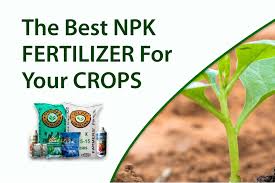
Dec . 09, 2024 17:37 Back to list
Manufacturers of Fertilizers with NPK Ratio 15-30-15 for Enhanced Plant Growth
Understanding 15-30-15 Fertilizer A Comprehensive Guide for Manufacturers
Fertilizers play a crucial role in modern agriculture, providing essential nutrients to crops and enhancing overall productivity. Among the various types of fertilizers available in the market, the 15-30-15 formulation stands out due to its unique nutrient composition, catering specifically to the needs of certain crops during various growth stages. This article delves into the significance of 15-30-15 fertilizers, their components, manufacturing processes, and considerations for producers in the market.
What is 15-30-15 Fertilizer?
The numbers in 15-30-15 fertilizer represent the percentage by weight of three key nutrients nitrogen (N), phosphorus (P), and potassium (K). Specifically, this formulation contains 15% nitrogen, 30% phosphorus, and 15% potassium. This ratio indicates a fertilizer that is particularly high in phosphorus, which is essential for root development, flower and fruit production, and overall plant health.
Key Components
1. Nitrogen (N) At 15%, nitrogen is vital for vegetative growth. It promotes leaf and stem development, making it crucial during the early stages of growth. Fertilizers enriched with nitrogen help plants achieve vigorous growth, contributing to higher yields.
2. Phosphorus (P) With a notable 30% phosphorus content, this fertilizer supports root establishment and development. Phosphorus is also critical during flowering and fruiting stages, thus improving the quality and quantity of produce. It helps plants utilize energy more efficiently and aids in photosynthesis.
3. Potassium (K) The final component, potassium (15%), contributes to overall plant health by enhancing disease resistance and regulating water usage. It is instrumental in enzyme activation and helps improve fruit quality and shelf life.
Manufacturing Processes
The manufacturing of 15-30-15 fertilizers typically involves several steps
1. Raw Material Procurement Manufacturers begin by sourcing raw materials rich in the required nutrients. Common sources include ammonium sulfate for nitrogen, phosphate rock for phosphorus, and potassium chloride for potassium.
fertilizer 15-30-15 manufacturers

2. Blending The raw materials are proportionately blended to achieve the desired N-P-K ratio. This process requires precision to ensure that the nutrient balance meets the specifications of the 15-30-15 formulation.
3. Granulation The blended mixture is then processed into granules through granulation techniques. This step can involve the use of heat, steam, or liquid bonding agents to achieve uniform granule size and structure.
4. Coating and Drying Following granulation, the granules may undergo a coating process to protect nutrients from leaching and to control nutrient release. After coating, they are dried to maintain durability during storage and transport.
5. Quality Control Finally, rigorous quality control measures are implemented to ensure that the final product meets industry standards and performs effectively in agricultural applications.
Market Considerations for Manufacturers
1. Target Crops Understanding which crops benefit the most from 15-30-15 fertilizer is essential for manufacturers. This formulation is particularly suited for flowering plants, vegetables, and fruits that require a strong phosphorus boost during their development.
2. Agronomic Practices Manufacturers must stay informed about current agronomic practices and advances in sustainable agriculture. This includes developing fertilizers that are eco-friendly and align with organic farming practices.
3. Regulatory Compliance Fertilizer manufacturers must adhere to strict regulations governing the production and marketing of nutrients. It is essential to stay updated on legislation to ensure compliance and avoid penalties.
4. Consumer Education Educating farmers and consumers about the benefits and proper usage of 15-30-15 fertilizer is crucial. This can help maximize crop yield while minimizing environmental impact.
Conclusion
The 15-30-15 fertilizer formulation is a valuable asset in the agricultural sector, catering to the specific nutrient needs of crops, particularly during crucial growth phases. For manufacturers, understanding the composition, production processes, and market dynamics is vital to producing effective fertilizers that can significantly impact agricultural productivity. By prioritizing quality and compliance, fertilizer manufacturers can play a pivotal role in enhancing global food security while promoting sustainable agricultural practices.
-
Premium 10 10 10 Fertilizer Organic for Balanced Plant Growth
NewsJul.29,2025
-
Premium 10 10 10 Fertilizer Organic for Balanced Plant Growth
NewsJul.29,2025
-
50 Pound Bags of 13-13-13 Fertilizer for All Plants – Bulk & Organic Options
NewsJul.28,2025
-
High-Efficiency 15-30-15 Granular Fertilizer for Healthy Crops
NewsJul.28,2025
-
15-30-15 Granular Fertilizer for Optimal Crop & Lawn Growth
NewsJul.27,2025
-
Premium 10 10 10 Water Soluble Fertilizer for Fast Plant Growth
NewsJul.26,2025
